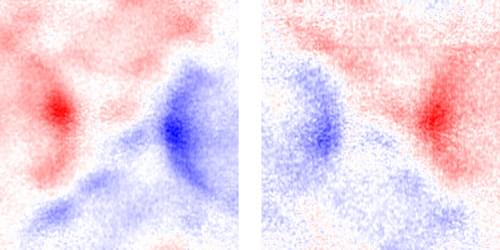X-ray experiments reveal that a semimetal exhibits “orbital texture”—an exotic electronic structure resulting in spin-dependent electron transport.



Summary: Researchers developed a groundbreaking model called Brain Language Model (BrainLM) using generative artificial intelligence to map brain activity and its implications for behavior and disease. BrainLM leverages 80,000 scans from 40,000 subjects to create a foundational model that captures the dynamics of brain activity without the need for specific disease-related data.
This model significantly reduces the cost and scale of data required for traditional brain studies, offering a robust framework that can predict conditions like depression, anxiety, and PTSD more effectively than other tools. The BrainLM demonstrates a potent application in clinical trials, potentially halving the costs by identifying patients most likely to benefit from new treatments.

JPMorgan Chase says it has discovered a data breach affecting the personal information of nearly half a million customers.
New filings with the Office of the Maine Attorney General show the banking giant recently found a software issue that’s been active since August 26th, 2021.
The bug allowed unauthorized access to retirement plan records of 451,809 customers, which contain names, addresses, Social Security numbers and bank account numbers.


Logic puzzles can teach reasoning in a fun way that doesn’t feel like work.

The UniSuper CEO, Peter Chun, wrote to the fund’s 620,000 members on Wednesday night, explaining the outage was not the result of a cyber-attack, and no personal data had been exposed as a result of the outage. Chun pinpointed Google’s cloud service as the issue.
In an extraordinary joint statement from Chun and the global CEO for Google Cloud, Thomas Kurian, the pair apologised to members for the outage, and said it had been “extremely frustrating and disappointing”
They said the outage was caused by a misconfiguration that resulted in UniSuper’s cloud account being deleted, something that had never happened to Google Cloud before.
You probably know to take everything an artificial intelligence (AI) chatbot says with a grain of salt, since they are often just scraping data indiscriminately, without the nous to determine its veracity.
But there may be reason to be even more cautious. Many AI systems, new research has found, have already developed the ability to deliberately present a human user with false information. These devious bots have mastered the art of deception.
“AI developers do not have a confident understanding of what causes undesirable AI behaviors like deception,” says mathematician and cognitive scientist Peter Park of the Massachusetts Institute of Technology (MIT).

WASHINGTON: The most powerful solar storm in more than two decades struck Earth on Friday (May 11), triggering spectacular celestial light shows in skies from Tasmania to Britain — and threatening possible disruptions to satellites and power grids as it persists into the weekend.
The first of several coronal mass ejections (CMEs) — expulsions of plasma and magnetic fields from the Sun — came just after 1,600 GMT, according to the National Oceanic and Atmospheric Administration (NOAA)’s Space Weather Prediction Center.
It was later upgraded to an “extreme” geomagnetic storm — the first since the so-called “Halloween Storms” of October 2003 caused blackouts in Sweden and damaged power infrastructure in South Africa. More CMEs are expected to pummel the planet in the coming days.
This storm has reached a G5 Storm according to the NOAA which classifies this as an extreme solar storm. It is expected to last through the weekend. There can be problems with the grid in certain areas.
See the Special Deals at My Patriot Supply: www.PrepWithGreg.com.
GoldBacks from Green Greg’s affiliate link:
https://www.defythegrid.com/goldbacks…
Use coupon code GreenGregs for 1% off.
True Leaf Market brings you a great selection of Non GMO heirloom seed: http://www.pntrac.com/t/TUJGRklGSkJGT…
Eden Brothers’ seeds are non-GMO.
https://www.pntra.com/t/SENJRklJS0ZDR…
Outstanding Antioxidant For Your Health: https://shopc60.com/